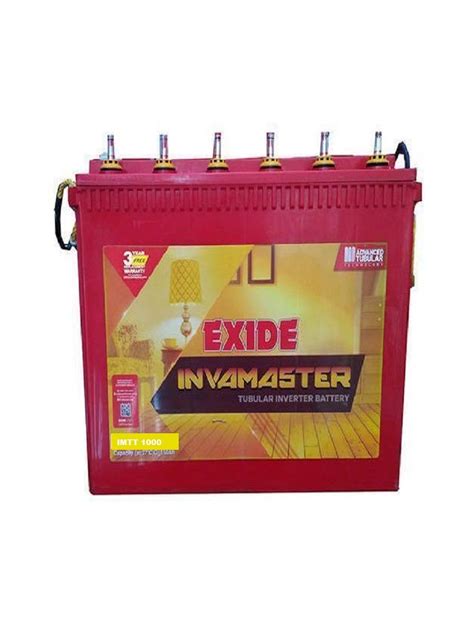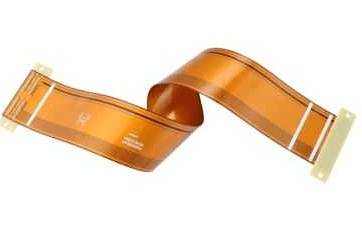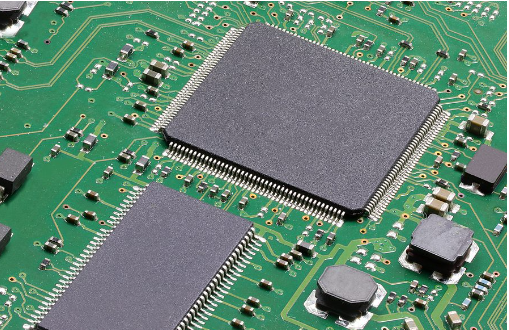Unveiling the Essentials of Bare Printed Circuit Boards
Key Takeaways
Understanding bare printed circuit boards (PCBs) is crucial for anyone involved in the PCB manufacturing sector. These components serve as the backbone of electronic devices, enabling connections between different electronic parts. As you delve into the intricacies of pcb manufacturing, you will encounter various processes that ensure the quality and reliability of these boards. It’s essential to recognize that selecting the right pcb manufacturing companies can significantly impact your overall production quality and efficiency, as they use sophisticated techniques to create bare PCBs tailored to specific requirements.
The pcb manufacturing cost plays a vital role in determining how effectively your business can compete in the market. Understanding the balance between quality and cost is key; investing in reliable manufacturing processes can yield long-term benefits, reducing failure rates of your products. Engaging with a reputable pcb manufacturing business provides access to advanced technology and expertise, which is pivotal for enhancing your product’s reliability through methods such as bare board testing. This testing not only ensures that you are meeting industry standards but also boosts consumer confidence in your electronic devices. Therefore, being well-versed in these aspects will empower you to make informed decisions within the ever-evolving electronics landscape.
Understanding the Structure of Bare Printed Circuit Boards
Bare printed circuit boards (PCBs) are the backbone of modern electronics, serving as the fundamental platform upon which electronic components are mounted. The structure of bare PCBs typically comprises several layers, each playing a crucial role in functionality and performance. At the most basic level, all PCBs consist of a substrate, which provides mechanical support; copper layers, where the circuits are etched; and a solder mask, which protects the copper traces while providing insulation.
You might be interested to know that pcb manufacturing companies utilize various materials for these layers, such as FR-4, a fiberglass epoxy that is known for its excellent insulating properties and mechanical strength. Understanding this structure is pivotal, especially when considering factors like pcb manufacturing cost and efficiency in their production. The configuration and thickness of each layer can significantly affect both the cost and performance of your final product.
To illustrate this, here’s a simple table showing typical components of a bare PCB structure:
| Layer | Material | Function |
|---|---|---|
| Substrate | FR-4 | Mechanical support |
| Copper Layer | Copper foil | Conducts electrical signals |
| Solder Mask | Epoxy resin | Insulation and protection |
“A solid understanding of PCB design principles can lead to more efficient manufacturing processes.”
Moreover, companies often need to consider how different design choices can impact their pcb manufacturing business strategy. Choices made during initial design phases can influence not only production timelines but also reliability during operation. Thus, every decision regarding materials or layout should be informed by an understanding of both structure and function.
In summary, a clear comprehension of how bare printed circuit boards are structured is not just beneficial but essential in today’s innovation-driven market space. Being aware of how your choices affect both performance and costs within the realms of pcb manufacturing will ultimately lead to more successful electronic products.
Key Manufacturing Processes for Bare PCBs
The manufacturing processes for bare printed circuit boards (PCBs) are essential to ensure the quality and performance of the final product. It begins with selecting appropriate raw materials, typically a laminate made of fiberglass and epoxy resin, as they provide the necessary durability and electrical insulation. Once materials are chosen, pcb manufacturing companies employ a technique called “photolithography,” which involves transferring a circuit design onto the laminate, forming the blueprint that will guide subsequent processes. After laying down the conductive pathways using copper foil, these circuits go through etching to remove excess copper, defining the PCB structure. Another critical phase involves drilling holes for component placement and routing electrical connections. Following this, bare board testing is employed to detect any defects or inconsistencies in the circuits before they can be assembled into electronic devices. This testing is crucial as it helps reduce overall pcb manufacturing cost by ensuring that issues are identified early in production. By understanding these key processes within your own pcb manufacturing business, you can significantly enhance both efficiency and reliability in your product offerings, ultimately contributing to more robust electronic devices in the market.
The Role of Bare PCBs in Electronic Device Development
In the realm of electronics, you may find that bare printed circuit boards (PCBs) serve as the foundational elements in the development of modern devices. These bare PCBs are essential not only for their structural features but also for their capability to facilitate a variety of electrical connections. Understanding the significance of pcb manufacturing processes is crucial, as these processes determine the durability and functionality of the boards. Typically, pcb manufacturing companies employ advanced techniques to ensure precision and reliability, addressing factors such as material choice and circuit layout.
You can appreciate the importance of these bare boards, especially when you consider their role in electronic device performance. From smartphones to medical devices, the quality and design of bare PCBs directly influence how well a device operates. This makes it vital for anyone in the field to be aware of pcb manufacturing costs and how they can impact overall project budgets, ensuring that designs are not only innovative but also economically feasible. Furthermore, engaging with a reliable pcb manufacturing business can provide you with insight into emerging technologies and methodologies in PCB production, hence enhancing product development cycles.
To sum it up, recognizing the role bare PCBs play is pivotal for your understanding of electronics overall. Whether your interest lies in designing new products or improving existing technology, a strong grasp on how bare PCBs contribute can significantly enhance your efforts in this dynamic field.
Introduction to Bare Board Testing
Bare board testing is a crucial step in the pcb manufacturing process, ensuring that the foundational elements of printed circuit boards (PCBs) meet stringent quality standards before they are integrated into more complex electronic devices. This testing process evaluates the completed bare printed circuit board for functionality and connectivity, helping to identify any faults that could lead to failure in the final product. As someone involved in the pcb manufacturing business, understanding the nuances of bare board testing is essential for maintaining high levels of reliability and performance in your designs. By collaborating with experienced pcb manufacturing companies, you can streamline your testing procedures, ideally reducing pcb manufacturing costs and enhancing overall product quality. Furthermore, effective bare board testing not only minimizes risks but also instills confidence in your end-users regarding device reliability. With ongoing advancements in technology, embracing robust testing methodologies enables you to stay ahead in a competitive landscape while ensuring that each PCB performs optimally for its intended applications.
Enhancing Reliability with Bare Board Testing Techniques
To enhance the reliability of bare printed circuit boards (PCBs), it is essential to understand the various testing techniques employed within the PCB manufacturing process. These techniques serve a critical function in identifying potential issues before a printed circuit board is fully assembled, thereby minimizing risks that could lead to product failures. For instance, bare board testing enables you to verify that all components are correctly aligned and functioning as they should. By utilizing methods such as Electrical Testing and Optical Inspection, you can ensure that the PCB manufacturing companies deliver high-quality products that meet stringent industry standards. This not only improves the overall reliability of your devices but also significantly impacts the pcb manufacturing cost, allowing you to manage expenses more effectively without compromising quality. As you explore options for your pcb manufacturing business, investing in robust testing techniques could prove essential in upholding your reputation for reliability and performance. Ultimately, prioritizing bare board testing can lead to enhanced customer satisfaction and trust in your products.
Common Challenges in Bare PCB Manufacturing
In the world of bare printed circuit board (PCB) manufacturing, you may encounter a number of common challenges that can affect the overall quality and efficiency of your production. One significant hurdle is the pcb manufacturing cost associated with sourcing high-quality raw materials and ensuring precision in the manufacturing process. These costs can fluctuate based on market demand, impacting your pcb manufacturing business and profitability. Additionally, you might face difficulties in achieving consistent quality standards across batches, which is crucial for ensuring that each board functions reliably in its final electronic application. Working with reputable pcb manufacturing companies that have a track record of excellence can help mitigate these issues, yet challenges like equipment failure or skilled labor shortages still loom large. Variability in design specifications can also lead to complications during production, requiring strict adherence to rigorous testing protocols post-manufacturing. By proactively addressing these challenges, you can significantly enhance your production efficiency and reliability in delivering high-quality bare PCBs.
Future Trends in Bare Printed Circuit Board Technology
As you look ahead in the pcb manufacturing landscape, several exciting trends are poised to reshape the industry. One significant advancement is the increasing demand for flexible printed circuit boards (FPCBs), which cater to the rising need for compact and lightweight electronic devices. This evolution in design requires pcb manufacturing companies to adapt their processes and invest in new technologies that facilitate the production of these adaptable circuits. Additionally, innovations in materials are emerging, including the use of advanced substrates that enhance performance while potentially reducing pcb manufacturing costs. This shift emphasizes a growing focus on sustainability, as manufacturers explore eco-friendly options to lessen environmental impact. Moreover, automation and artificial intelligence are revolutionizing the pcb manufacturing business, allowing for greater precision and quicker turnaround times. As you navigate this evolving landscape, staying informed about these trends will be essential for ensuring your projects meet contemporary standards and requirements in technology development. The future of bare printed circuit boards not only promises enhanced functionality but also a more sustainable approach to creation and distribution within the electronic sector.
Conclusion
In conclusion, understanding the intricacies of bare printed circuit boards (PCBs) is essential for anyone involved in the pcb manufacturing landscape. From the initial design phase to the final assembly of electronic devices, every step plays a critical role in ensuring reliability and functionality. As you explore pcb manufacturing companies, it’s important to recognize that each company may adopt varying protocols and techniques, influencing the overall pcb manufacturing cost. The challenges faced in this business can significantly impact production timelines and quality assurance. By staying informed about advancements in pcb manufacturing, you can better appreciate how these components are evolving to meet modern demands. This knowledge not only helps you understand the current market but also prepares you for potential future trends that may shape the pcb manufacturing business landscape. Engaging with these insights can enhance your grasp of how bare PCBs function as the backbone of electronic solutions in this fast-paced industry.
FAQs
What is a bare printed circuit board (PCB)?
A bare printed circuit board (PCB) refers to a circuit board that has not yet been populated with any electronic components. It is an essential part of electronic devices, serving as the foundation for connecting and supporting these components.
What processes are involved in PCB manufacturing?
The pcb manufacturing process involves several key steps including design, material selection, etching, drilling, plating, and testing. Specific methods can vary depending on the technology employed by different pcb manufacturing companies, but these fundamental stages are critical to achieving reliable boards.
What factors influence PCB manufacturing cost?
The pcb manufacturing cost can be influenced by various factors including the complexity of the design, the materials used, volume of production, and any additional features such as surface finish or special treatments. Understanding these factors can help you better plan your iterations.
How significant is bare board testing in the PCB manufacturing business?
Bare board testing plays a critical role in ensuring the quality of PCBs before they are assembled into electronic devices. This process detects defects and verifies functionality early on, reducing potential failures in later stages of production and ultimately saving costs for your pcb manufacturing business.
What are common challenges in PCB manufacturing?
Some common challenges include managing tight tolerances during production, ensuring effective signal integrity in designs, and navigating supply chain issues with materials. Being aware of these obstacles can inform better practices when engaging with pcb manufacturing companies, leading to more efficient processes.
For further information on PCB manufacturing processes and how they can enhance your product reliability, please click here: AndwinPCB – PCB Manufacturing.







